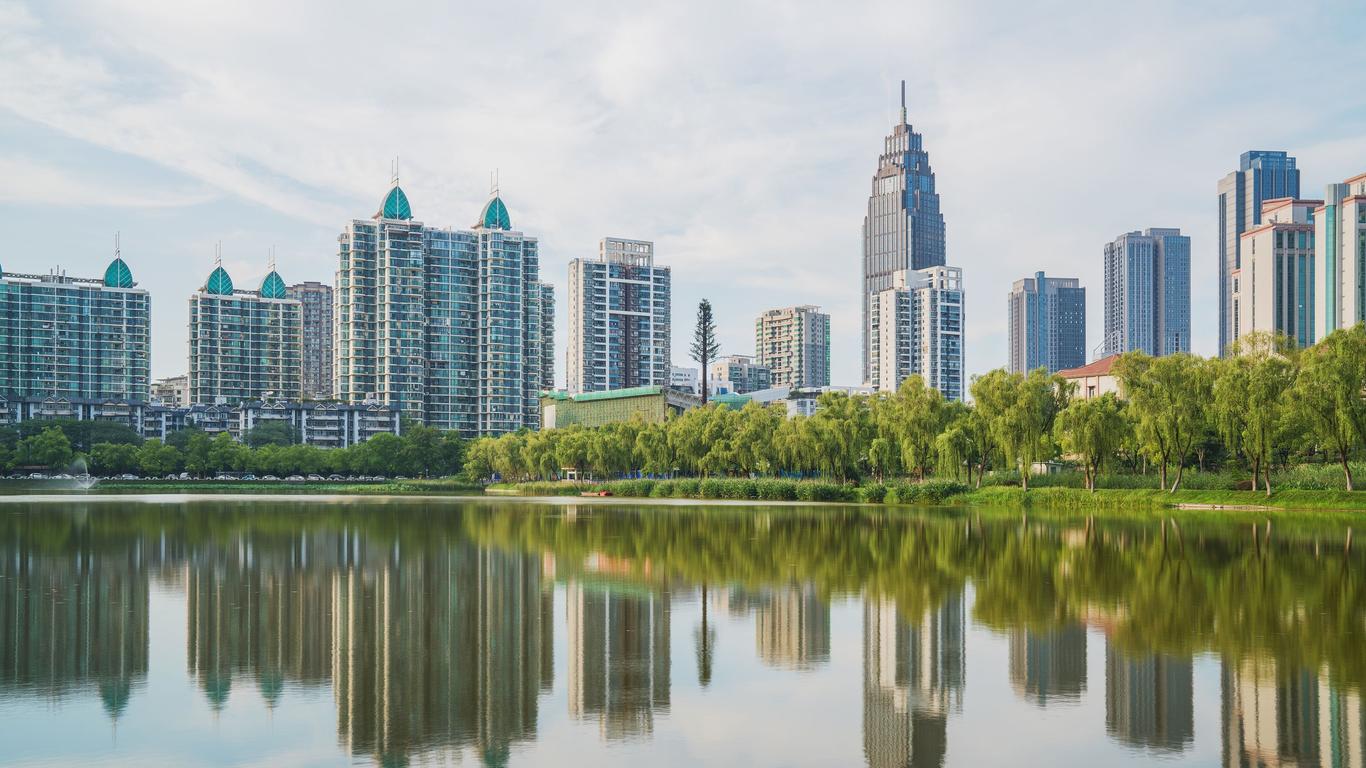1. Soar Above Wuhan At This Iconic Site
Wuhan's most recognizable building, the beautiful Yellow Crane Tower is like a mascot for Hubei's capital. Situated on Sheshan Hill, the tower looks to be hundreds of years old. In a way, it is, but the current version was rebuilt (incredibly well) in 1981. However, there has been a Yellow Crane Tower in the city since around 220 AD, and 12 versions have been built and destroyed since then. In religious terms, the tower is an important Daoist temple, having seen the "immortal" Lu Dongbin ascend to heaven in the 8th century.
2. Heavenly Architecture And Sacred Art
Guiyuan ranks among China's most sacred sites, which may be why it attracts such huge crowds - so get there early to enjoy the serene 350 year-old temple complex. Located in Hanyang, just west of central Wuhan, Guiyuan is full of riches for tourists to discover, including hundreds of Buddhist statues (lohans), and stately gardens. Check the lohans carefully when you visit. Amazingly, each one is completely different, as artists sought to capture the essence of the subject. And don't miss the beautiful Sakyamuni Buddha, either.
3. Hubei's Historical Highlight
This museum is one of China's very best, and is a fitting testament to China's long, glorious past. Highlights are all over the place in the huge museum building, but include the tomb of Marquis Yi of Zeng, part of which is a massive 65 tonne set of "chime bells". Crafts lovers will adore the collection of jade jewelry and decorations, while the exhibition of Chu-era artifacts delves deep into Chinese history. When you visit, the museum is free, but there is a small surcharge for hearing the chime bells in action.
4. An Inner-City Recreational Paradise
East Lake is modern Wuhan's recreational hub. Located along the shores of (unsurprisingly) East Lake, it's the site of many of Wuhan's major attraction. Aside from the Provincial Museum, you'll discover the Botanical Gardens, which have a huge kiwi fruit collection, the stunning Cherry Blossom Park, as well as numerous scenic spots like the Listening-to-the-Waves Tower, and the Chu Castle. The whole area sprawls along the lakefront, and is divided into several zones, such as Mo Hill and Tingtao - each of which require plenty of time to explore.
5. Showcasing Wuhan's Creative Wonders
These days, Wuhan is becoming a genuine artistic center (not for the first time), thanks to artists groups like Wuhan Art Terminus. But for the largest collection of contemporary and historic works from the region, visiting the Húběi Museum of Art is essential. Also situated in East Lake, the gallery has a strong representation from recent artists, as well as traditional Chinese works, oil paintings from the Revolutionary Era, sculptures, and lacquer work, too. Constantly changing special shows, and big events like the Wuhan Triennale have propelled it into the front rank of the nation's galleries.


